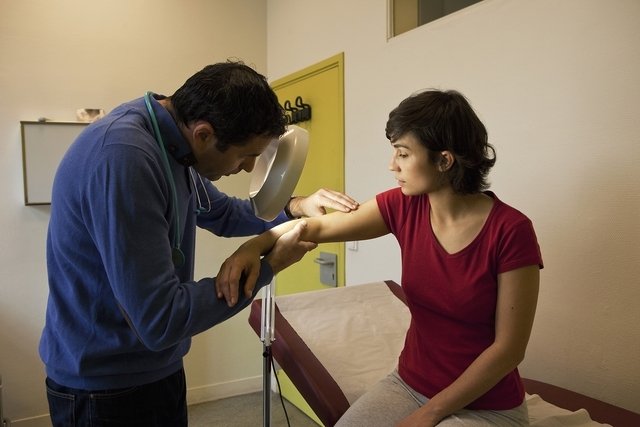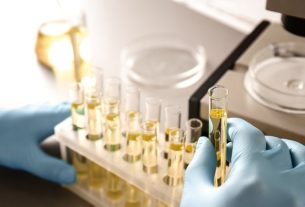The Wood’s lamp, also called Wood’s light or LW, is a diagnostic device widely used in dermatology and aesthetics with the aim of verifying the presence of skin lesions, their characteristics and extent according to the fluorescence observed when the lesion analyzed is exposed to low wavelength UV light.
The evaluation with the Wood’s lamp is carried out in addition to the dermatological examination under normal light, and is mainly indicated for diagnosing skin and nail diseases caused by fungi, as well as being useful in diagnosing porphyria, dark or light spots on the skin. , such as vitiligo and melasma, and signs and oily or dry skin.
In this way, based on the fluorescence of the lesion viewed under UV light, the dermatologist is able to make the diagnosis and, thus, indicate the most appropriate treatment.

What is it for
The main indications for using the Wood lamp are:
- Fungal infections, such as tinea captis or white cloth;
- Bacterial infections, such as erythrasma;
- Melasma;
- Post-inflammatory skin pigmentation;
- Vitiligo;
- Tuberous sclerosis;
- It would be called versicolor;
- Lice;
- Sarna;
- Porphyria;
- Acne.
Furthermore, the Wood’s lamp can be used to evaluate signs of dryness and oiliness, before carrying out aesthetic procedures, as it allows the professional to check the characteristics of the skin and, thus, determine the most appropriate procedure.
In the case of pigmentation disorders, the Wood’s lamp is used not only to evaluate the limits and characteristics of the lesion, but also to check the presence of subclinical lesions that were not identified in conventional dermatological examination, using fluorescence alone. Although the use of the Wood’s lamp is very effective in diagnosing and monitoring the evolution of lesions, its use does not dispense with conventional dermatological examination. Understand how the dermatological examination is carried out.
How it works
The Wood’s lamp is a small piece of equipment that allows the identification of various dermatological lesions according to the fluorescence pattern observed when the lesion is illuminated at a low wavelength.
For the diagnosis to be the most correct, the assessment of the lesion using the Wood’s lamp must be carried out 15 cm from the lesion, in a dark environment with no visible light, so that only the fluorescence of the lesion is perceived.
What does the result mean
The result of the Wood’s lamp examination varies according to the luminescence color, making it possible for the doctor to identify and differentiate dermatological lesions. In normal skin, the light from the Wood lamp appears purple, without fluorescence, and the result is considered negative.
In the case of infectious dermatoses caused by some fungi or bacteria, the fluorescence represents the infectious agent, but in the case of porphyria, the fluorescence occurs due to the substances present in the urine, being considered a positive result.
These results must be evaluated by the dermatologist, and in some cases, a false positive or false negative result may occur, especially if the office room is not dark enough during the exam, or the person has used cosmetic products, such as perfumes, moisturizers , makeup, or products to bleach hair.
Bibliography
- ATWAN, Ausama A.; ZIAJ, Stela; MILLS, Caroline M. Defining Surgical Margins With Wood Lamp. Dermatol Pract Concept. Vol 10. 1 ed; 2020
- SATO, Tomotaka; ASAHINA, Yasuhiko; TOSHIMA, Sasumu et al. Usefulness of Wood’s Lamp for the Diagnosis and Treatment Follow-up of Onychomycosis. Medical Mycology Journal. Vol 61. 2 ed; 17-21, 2020

Sign up for our newsletter and stay up to date with exclusive news
that can transform your routine!
Warning: Undefined array key "title" in /home/storelat/public_html/wp-content/plugins/link-whisper-premium/templates/frontend/related-posts.php on line 12
Warning: Undefined array key "title_tag" in /home/storelat/public_html/wp-content/plugins/link-whisper-premium/templates/frontend/related-posts.php on line 13



